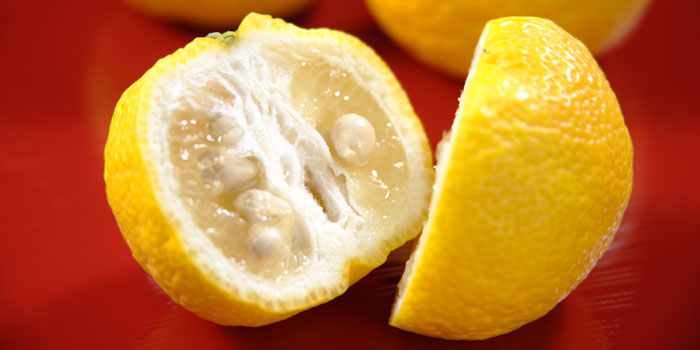
Pronounce it: yoo-zoo
This relatively new citrus in the UK originated in Central China and Tibet but is more commonly associated with Japanese cuisine. Intensely aromatic, its major antecedent among several arcane citruses is the mandarin, which thus gives a sweet-sharp flavour that is both orangey and lemony but also includes a fresh hint of green that all combine to make something lively and individual; some detect the presence of grapefruit flavour too.
Yuzu is rarely eaten as a fruit but the scented juice and zest can be used in both savoury and sweet dishes, adding instant difference to a repertoire for almost no effort – hence its sudden explosion onto menus and in commercial products, and its growing presence in the domestic kitchen.
Availability
Rarely available fresh but might be found in Asian supermarkets or, occasionally, in one or two of the grander supermarkets. It will become more common and is increasingly found as a flavouring in commercially produced products from oils and dressings to ice creams and yogurts.
Choose the best
Yuzu fruits can be used green or yellow: a slight scratch and sniff of the skin will tell you if they have the necessary fragrance. The skins can have a slightly wrinkled appearance but this is not a problem if it is firm and springs back into shape when lightly pressed.
Cook it
Easy. Use yuzu juice or grated zest with absolute confidence wherever you would use orange or lemon, in drinks and cocktails, biscuits, brownies, shortbread, cakes, cake icings, in salad dressings, on fish or poultry, in fruit puddings and their toppings including pastry and sponges, in yogurt, ice cream, custards, mousses, trifles and pancakes.
Be the first to comment on "Yuzu"